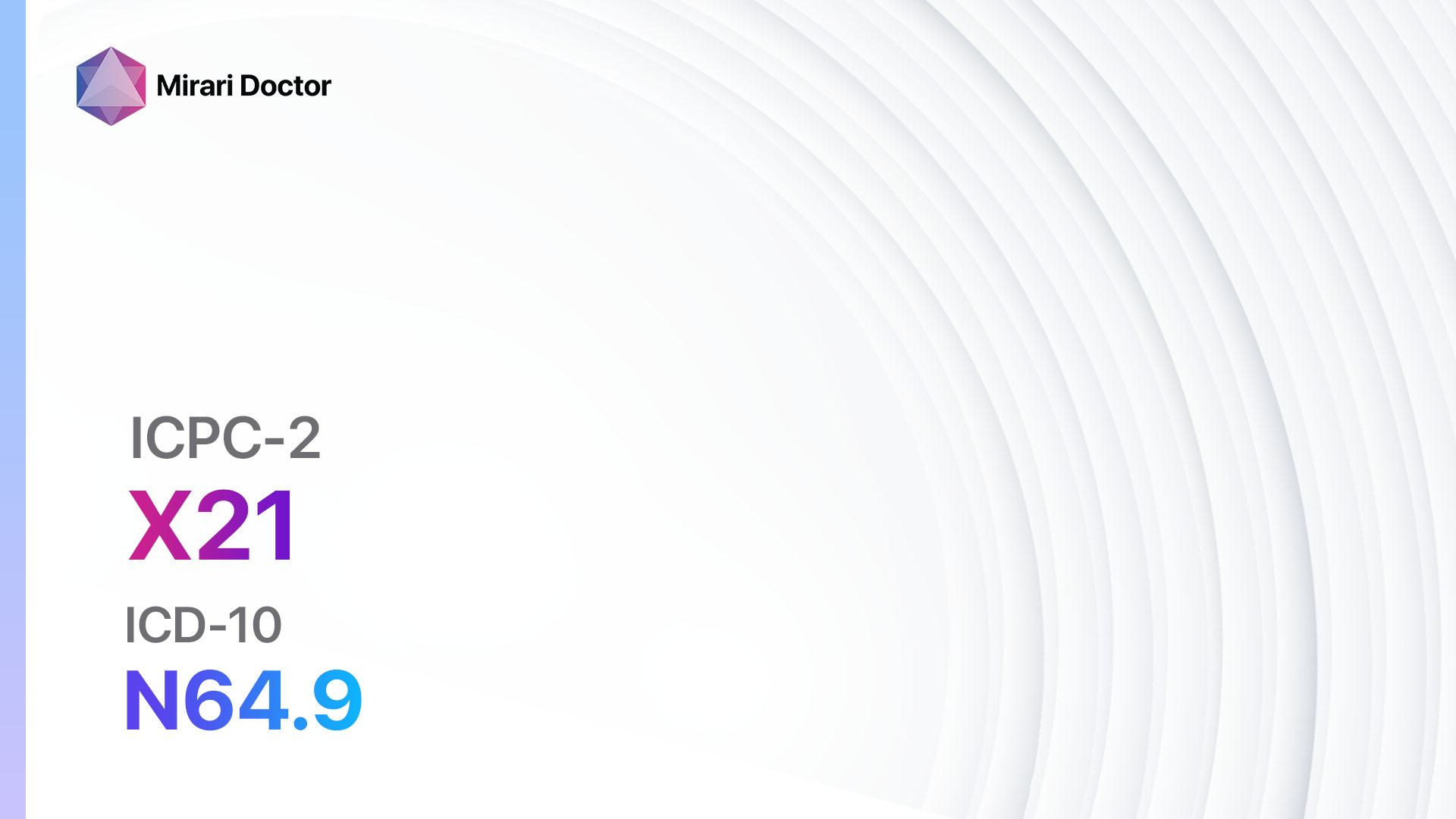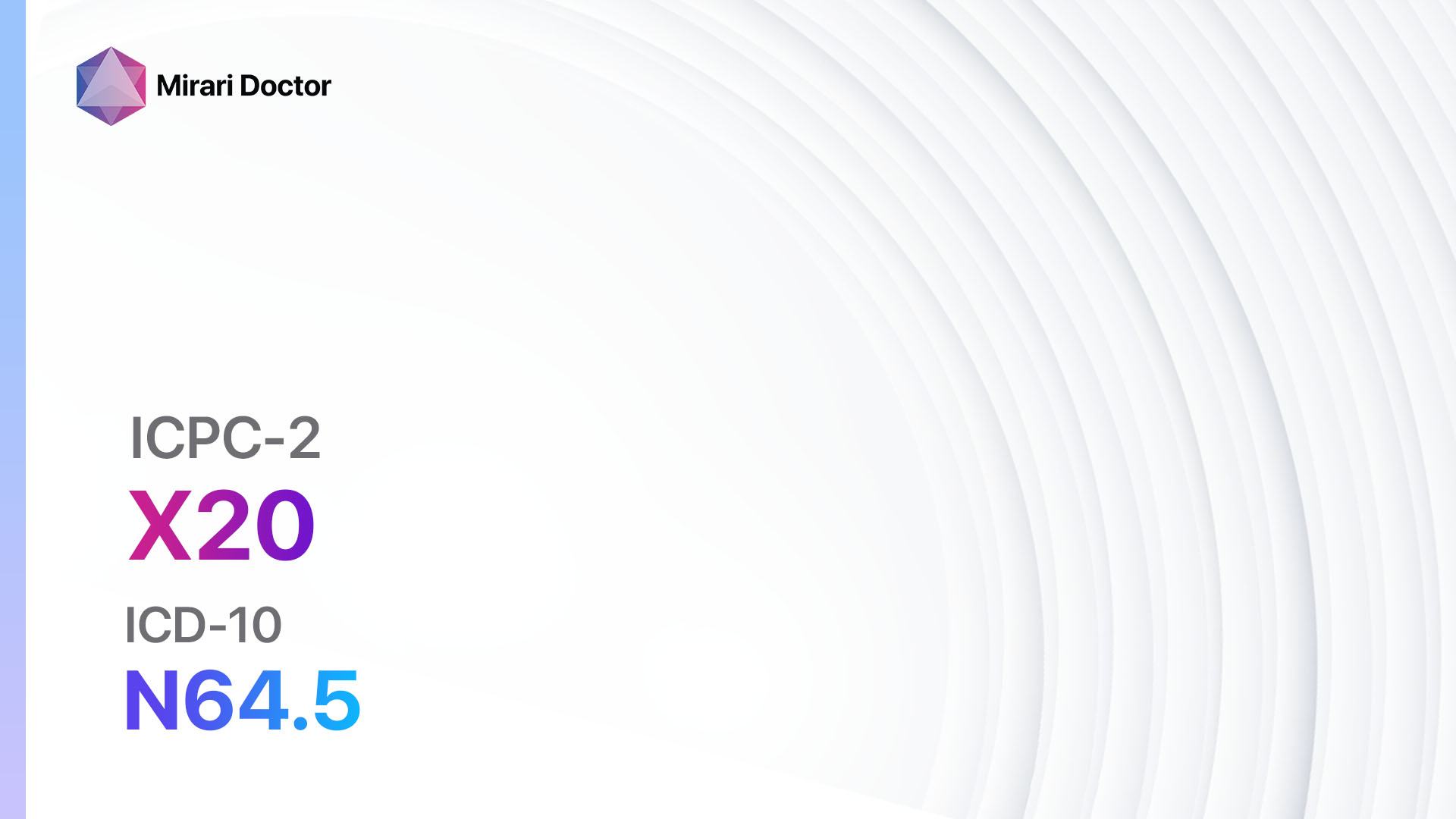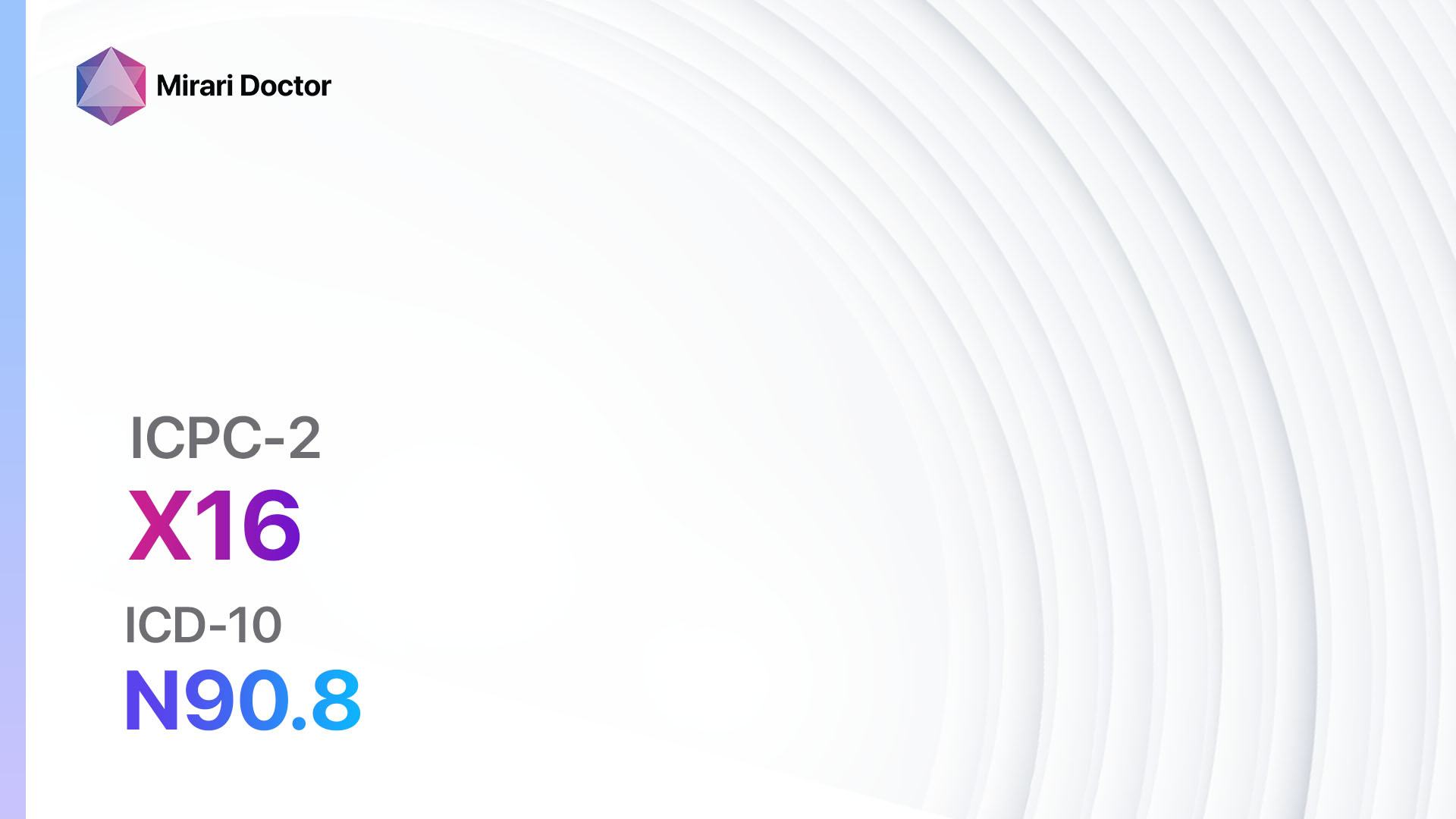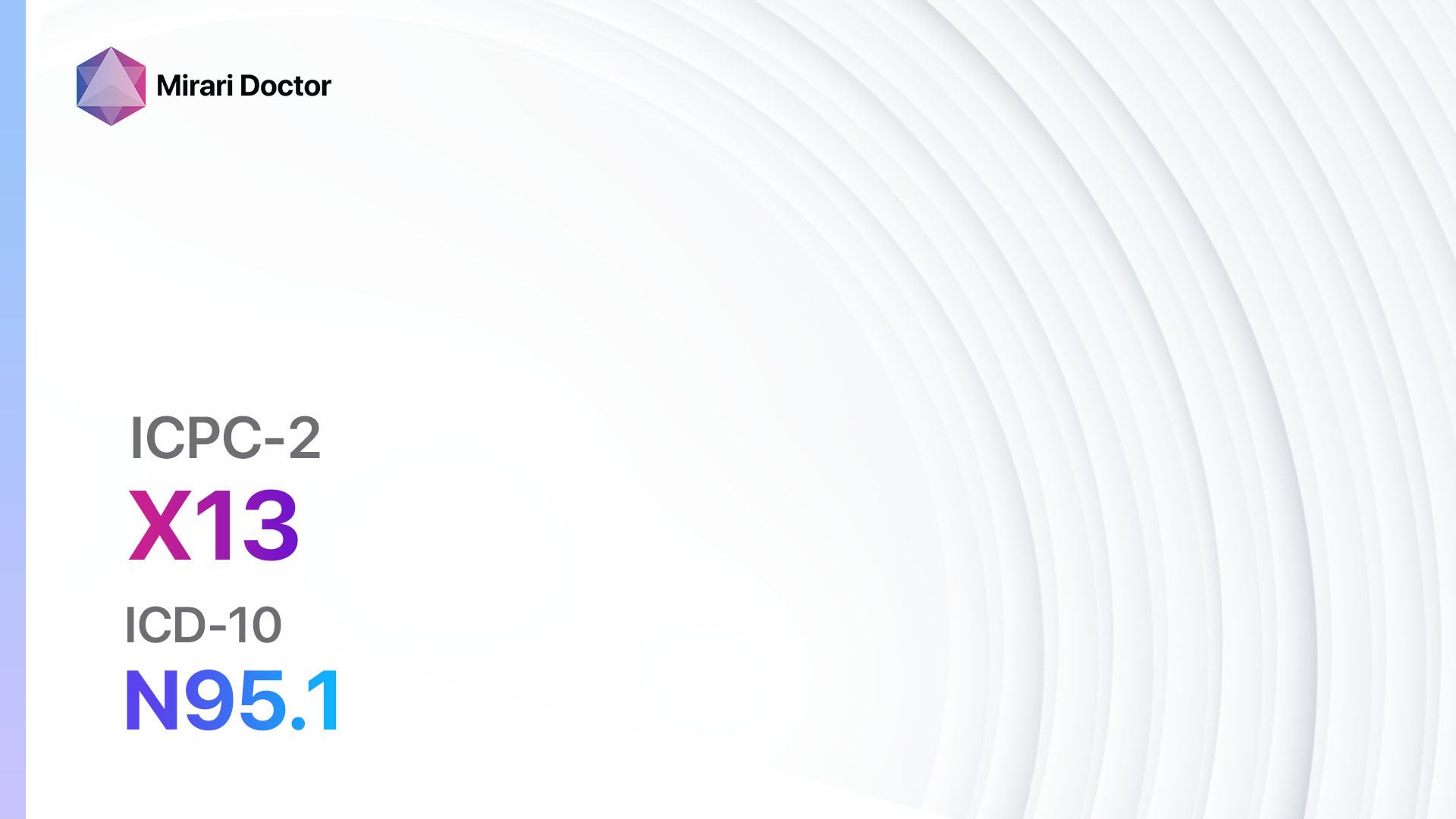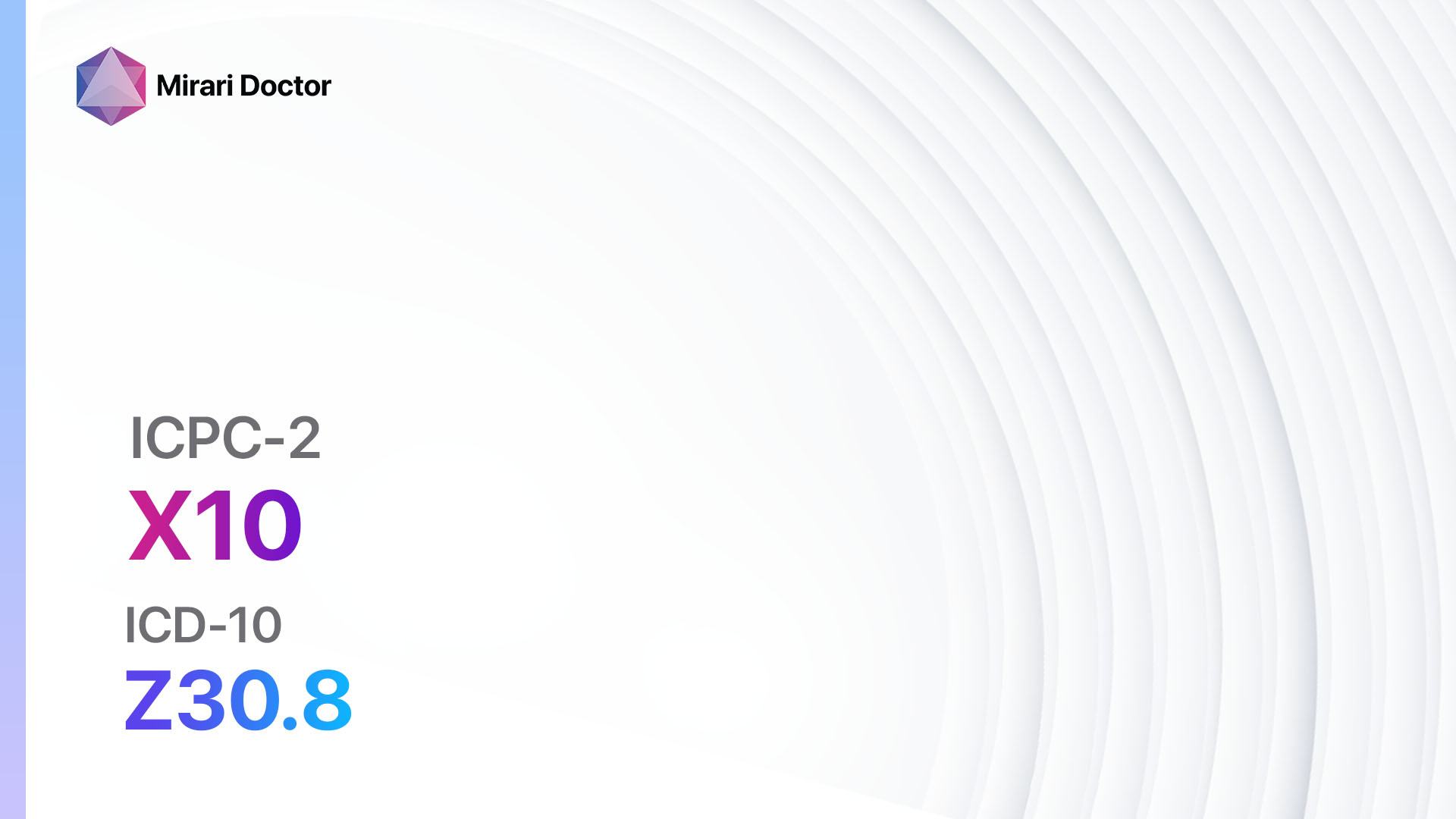
Introduction
Limited function/disability (x) refers to a condition in which an individual experiences a decrease in their ability to perform daily activities due to physical or cognitive impairments.[1]This guide aims to provide an overview of the symptoms, causes, diagnostic steps, possible interventions, and lifestyle interventions for limited function/disability (x).
Codes
- ICPC-2 Code: X28 Limited function/disability (x)[2]
- ICD-10 Code: Z73.6 Limitation of activities due to disability[3]
Symptoms
- Difficulty in performing daily activities[4]
- Impaired mobility[5]
- Muscle weakness[6]
- Loss of coordination[7]
- Cognitive impairments[8]
- Fatigue[9]
- Pain or discomfort[10]
Causes
- Neurological disorders (e.g., stroke, Parkinson’s disease)
- Musculoskeletal disorders (e.g., arthritis, osteoporosis)
- Traumatic injuries (e.g., spinal cord injury, traumatic brain injury)
- Chronic conditions (e.g., multiple sclerosis, fibromyalgia)
- Age-related changes and degeneration
Diagnostic Steps
Medical History
- Gather information about the patient’s symptoms, including the onset, duration, and progression.
- Identify any risk factors or medical conditions that may contribute to limited function/disability (x).
- Assess the impact of the condition on the patient’s daily life and functional abilities.
Physical Examination
- Perform a comprehensive physical examination to assess muscle strength, range of motion, coordination, and balance.
- Evaluate sensory function and reflexes.
- Assess cognitive function, including memory, attention, and problem-solving abilities.
Laboratory Tests
- Blood tests: Evaluate for underlying medical conditions, such as vitamin deficiencies, thyroid disorders, or autoimmune diseases.
- Genetic testing: In certain cases, genetic testing may be recommended to identify specific genetic mutations associated with limited function/disability (x).
- Other specialized laboratory tests may be ordered based on the suspected underlying cause of the condition.
Diagnostic Imaging
- X-rays: Assess for fractures, joint abnormalities, or degenerative changes.
- MRI (Magnetic Resonance Imaging): Provide detailed images of the brain, spinal cord, or musculoskeletal structures.
- CT scan (Computed Tomography): Useful for evaluating bony structures and detecting abnormalities in the brain or spine.
- Ultrasound: Assess blood flow, muscle integrity, or joint abnormalities.
Other Tests
- Electromyography (EMG): Measures electrical activity in muscles to evaluate muscle function and detect nerve abnormalities.
- Nerve conduction studies: Assess the speed and strength of electrical signals in nerves.
- Neuropsychological testing: Evaluate cognitive function, including memory, attention, and executive function.
Follow-up and Patient Education
- Schedule regular follow-up visits to monitor the progression of the condition and adjust treatment plans accordingly.
- Provide education and resources to the patient and their caregivers regarding adaptive strategies, assistive devices, and community support services.
Possible Interventions
Traditional Interventions
Medications:
Top 5 drugs for Limited function/disability (x):
- Nonsteroidal anti-inflammatory drugs (NSAIDs) (e.g., Ibuprofen, Naproxen):
- Cost: Generic versions can be $3-$20/month.
- Contraindications: History of gastrointestinal bleeding, renal impairment.
- Side effects: Upset stomach, increased risk of bleeding.
- Severe side effects: Kidney damage, cardiovascular events.
- Drug interactions: Anticoagulants, corticosteroids.
- Warning: Prolonged use may increase the risk of cardiovascular events.
- Muscle relaxants (e.g., Cyclobenzaprine, Baclofen):
- Cost: Generic versions can be $10-$50/month.
- Contraindications: History of seizures, liver impairment.
- Side effects: Drowsiness, dizziness.
- Severe side effects: Allergic reactions, hallucinations.
- Drug interactions: Sedatives, alcohol.
- Warning: May cause drowsiness, avoid driving or operating heavy machinery.
- Antidepressants (e.g., Amitriptyline, Duloxetine):
- Cost: Generic versions can be $10-$50/month.
- Contraindications: Recent myocardial infarction, narrow-angle glaucoma.
- Side effects: Dry mouth, drowsiness.
- Severe side effects: Suicidal thoughts, serotonin syndrome.
- Drug interactions: Monoamine oxidase inhibitors (MAOIs), other serotonergic drugs.
- Warning: May take several weeks to achieve therapeutic effect.
- Anticonvulsants (e.g., Gabapentin, Pregabalin):
- Cost: Generic versions can be $10-$50/month.
- Contraindications: Hypersensitivity to the drug.
- Side effects: Dizziness, drowsiness.
- Severe side effects: Suicidal thoughts, severe skin reactions.
- Drug interactions: Opioids, sedatives.
- Warning: May cause drowsiness, avoid driving or operating heavy machinery.
- Cognitive enhancers (e.g., Donepezil, Memantine):
- Cost: Generic versions can be $10-$50/month.
- Contraindications: Hypersensitivity to the drug.
- Side effects: Nausea, diarrhea.
- Severe side effects: Seizures, hallucinations.
- Drug interactions: Anticholinergic drugs, cholinesterase inhibitors.
- Warning: May take several weeks to achieve therapeutic effect.
Alternative Drugs:
- Opioids (e.g., Tramadol, Oxycodone): Used for severe pain management, but caution should be exercised due to the risk of dependence and addiction.
- Antianxiety medications (e.g., Lorazepam, Alprazolam): Used to manage anxiety and improve sleep, but long-term use should be avoided due to the risk of dependence.
- Antispasmodics (e.g., Dicyclomine, Hyoscyamine): Used to relieve muscle spasms and cramps, but may cause drowsiness and dry mouth.
- Antipsychotics (e.g., Risperidone, Quetiapine): Used for behavioral symptoms associated with cognitive impairments, but may cause sedation and metabolic side effects.
- Stimulants (e.g., Methylphenidate, Modafinil): Used to improve attention and alertness in individuals with cognitive impairments, but may cause insomnia and loss of appetite.
Surgical Procedures:
- Joint replacement surgery: For individuals with severe joint damage or deformities, joint replacement surgery may be considered to improve mobility and reduce pain. Cost: $20,000 to $50,000.
- Spinal fusion surgery: In cases of spinal instability or severe degenerative conditions, spinal fusion surgery may be performed to stabilize the spine and alleviate pain. Cost: $50,000 to $100,000.
Alternative Interventions
- Physical therapy: Aims to improve strength, flexibility, and mobility through targeted exercises and manual therapy techniques. Cost: $50-$150 per session.
- Occupational therapy: Focuses on improving daily living skills and facilitating independence through adaptive strategies and assistive devices. Cost: $50-$150 per session.
- Speech therapy: Helps individuals with cognitive impairments improve communication skills and swallowing abilities. Cost: $50-$150 per session.
- Acupuncture: May help alleviate pain and improve overall well-being. Cost: $60-$120 per session.
- Mind-body techniques: Such as yoga, meditation, and tai chi, can help reduce stress, improve relaxation, and enhance overall physical and mental well-being. Cost: Varies depending on the location and instructor.
Lifestyle Interventions
- Regular exercise: Engaging in physical activity, such as walking, swimming, or cycling, can improve strength, flexibility, and overall physical function. Cost: Varies depending on the chosen activity (e.g., gym membership, equipment costs).
- Healthy diet: Consuming a balanced diet rich in fruits, vegetables, whole grains, and lean proteins can support overall health and well-being. Cost: Varies depending on individual food choices and dietary restrictions.
- Weight management: Maintaining a healthy weight can reduce the strain on joints and improve overall mobility. Cost: Varies depending on individual weight loss strategies (e.g., diet programs, meal replacements).
- Assistive devices: Using assistive devices, such as canes, walkers, or wheelchairs, can enhance mobility and independence. Cost: Varies depending on the type and quality of the device.
- Home modifications: Making necessary modifications to the home environment, such as installing grab bars or ramps, can improve safety and accessibility. Cost: Varies depending on the extent of modifications needed.
It is important to note that the cost ranges provided are approximate and may vary depending on the location and availability of the interventions. It is recommended to consult with healthcare professionals and insurance providers for accurate cost estimates and coverage options.
Mirari Cold Plasma Alternative Intervention
Understanding Mirari Cold Plasma
- Safe and Non-Invasive Treatment: Mirari Cold Plasma is a safe and non-invasive treatment option for various skin conditions. It does not require incisions, minimizing the risk of scarring, bleeding, or tissue damage.
- Efficient Extraction of Foreign Bodies: Mirari Cold Plasma facilitates the removal of foreign bodies from the skin by degrading and dissociating organic matter, allowing easier access and extraction.
- Pain Reduction and Comfort: Mirari Cold Plasma has a local analgesic effect, providing pain relief during the treatment, making it more comfortable for the patient.
- Reduced Risk of Infection: Mirari Cold Plasma has antimicrobial properties, effectively killing bacteria and reducing the risk of infection.
- Accelerated Healing and Minimal Scarring: Mirari Cold Plasma stimulates wound healing and tissue regeneration, reducing healing time and minimizing the formation of scars.
Mirari Cold Plasma Prescription
Video instructions for using Mirari Cold Plasma Device – X28 Limited function/disability (x) (ICD-10:Z73.6)
| Mild | Moderate | Severe |
| Mode setting: 7 (Immunotherapy) Location: 1 (Sacrum) Morning: 15 minutes, Evening: 15 minutes | Mode setting: 7 (Immunotherapy) Location: 1 (Sacrum) Morning: 30 minutes, Lunch: 30 minutes, Evening: 30 minutes | Mode setting: 7 (Immunotherapy) Location: 1 (Sacrum) Morning: 30 minutes, Lunch: 30 minutes, Evening: 30 minutes |
| Mode setting: 7 (Immunotherapy) Location: 4 (Heart, Bile & Pancreas) Morning: 15 minutes, Evening: 15 minutes | Mode setting: 7 (Immunotherapy) Location: 4 (Heart, Bile & Pancreas) Morning: 30 minutes, Lunch: 30 minutes, Evening: 30 minutes | Mode setting: 7 (Immunotherapy) Location: 4 (Heart, Bile & Pancreas) Morning: 30 minutes, Lunch: 30 minutes, Evening: 30 minutes |
| Modesetting:3 (Antiviral Therapy) Location:0 (Localized) Morning:15 minutes, Evening:15minutes | Modesetting:3 (Antiviral Therapy) Location:0 (Localized) Morning:30 minutes, Lunch:30 minutes, Evening:30 minutes | Modesetting:3 (Antiviral Therapy) Location:0 (Localized) Morning:30 minutes, Lunch:30 minutes, Evening:30 minutes |
| Mode setting: 7 (Immunotherapy) Location: 7 (Neuro system & ENT) Morning: 15 minutes, Evening: 15 minutes | Mode setting: 7 (Immunotherapy) Location: 7 (Neuro system & ENT) Morning: 30 minutes, Lunch: 30 minutes, Evening: 30 minutes | Mode setting: 7 (Immunotherapy) Location: 7 (Neuro system & ENT) Morning: 30 minutes, Lunch: 30 minutes, Evening: 30 minutes |
| Total Morning: 60 minutes approx. $10 USD, Evening: 60 minutes approx. $10 USD | Total Morning: 120 minutes approx. $20 USD, Lunch: 120 minutes approx. $20 USD, Evening: 120 minutes approx. $20 USD, | Total Morning: 120 minutes approx. $20 USD, Lunch: 120 minutes approx. $20 USD, Evening: 120 minutes approx. $20 USD, |
| Usual treatment for 7-60 days approx. $140 USD – $1200 USD | Usual treatment for 6-8 weeks approx. $2,520USD – $3,360 USD | Usual treatment for 3-6 months approx. $5,400 USD – $10,800 USD |
 |
|
Use the Mirari Cold Plasma device to treat Limited function/disability (x) effectively.
WARNING: MIRARI COLD PLASMA IS DESIGNED FOR THE HUMAN BODY WITHOUT ANY ARTIFICIAL OR THIRD PARTY PRODUCTS. USE OF OTHER PRODUCTS IN COMBINATION WITH MIRARI COLD PLASMA MAY CAUSE UNPREDICTABLE EFFECTS, HARM OR INJURY. PLEASE CONSULT A MEDICAL PROFESSIONAL BEFORE COMBINING ANY OTHER PRODUCTS WITH USE OF MIRARI.
Step 1: Cleanse the Skin
- Start by cleaning the affected area of the skin with a gentle cleanser or mild soap and water. Gently pat the area dry with a clean towel.
Step 2: Prepare the Mirari Cold Plasma device
- Ensure that the Mirari Cold Plasma device is fully charged or has fresh batteries as per the manufacturer’s instructions. Make sure the device is clean and in good working condition.
- Switch on the Mirari device using the power button or by following the specific instructions provided with the device.
- Some Mirari devices may have adjustable settings for intensity or treatment duration. Follow the manufacturer’s instructions to select the appropriate settings based on your needs and the recommended guidelines.
Step 3: Apply the Device
- Place the Mirari device in direct contact with the affected area of the skin. Gently glide or hold the device over the skin surface, ensuring even coverage of the area experiencing.
- Slowly move the Mirari device in a circular motion or follow a specific pattern as indicated in the user manual. This helps ensure thorough treatment coverage.
Step 4: Monitor and Assess:
- Keep track of your progress and evaluate the effectiveness of the Mirari device in managing your Limited function/disability (x). If you have any concerns or notice any adverse reactions, consult with your health care professional.
Note
This guide is for informational purposes only and should not replace the advice of a medical professional. Always consult with your healthcare provider or a qualified medical professional for personal advice, diagnosis, or treatment. Do not solely rely on the information presented here for decisions about your health. Use of this information is at your own risk. The authors of this guide, nor any associated entities or platforms, are not responsible for any potential adverse effects or outcomes based on the content.
Mirari Cold Plasma System Disclaimer
- Purpose: The Mirari Cold Plasma System is a Class 2 medical device designed for use by trained healthcare professionals. It is registered for use in Thailand and Vietnam. It is not intended for use outside of these locations.
- Informational Use: The content and information provided with the device are for educational and informational purposes only. They are not a substitute for professional medical advice or care.
- Variable Outcomes: While the device is approved for specific uses, individual outcomes can differ. We do not assert or guarantee specific medical outcomes.
- Consultation: Prior to utilizing the device or making decisions based on its content, it is essential to consult with a Certified Mirari Tele-Therapist and your medical healthcare provider regarding specific protocols.
- Liability: By using this device, users are acknowledging and accepting all potential risks. Neither the manufacturer nor the distributor will be held accountable for any adverse reactions, injuries, or damages stemming from its use.
- Geographical Availability: This device has received approval for designated purposes by the Thai and Vietnam FDA. As of now, outside of Thailand and Vietnam, the Mirari Cold Plasma System is not available for purchase or use.
References
- World Health Organization. (2001). International classification of functioning, disability and health: ICF. World Health Organization.
- World Organization of Family Doctors. (1998). ICPC-2: International Classification of Primary Care. Oxford University Press, USA.
- World Health Organization. (2004). ICD-10: international statistical classification of diseases and related health problems: tenth revision. World Health Organization.
- Verbrugge, L. M., & Jette, A. M. (1994). The disablement process. Social science & medicine, 38(1), 1-14.
- Guralnik, J. M., Ferrucci, L., Simonsick, E. M., Salive, M. E., & Wallace, R. B. (1995). Lower-extremity function in persons over the age of 70 years as a predictor of subsequent disability. New England Journal of Medicine, 332(9), 556-562.
- Fried, L. P., Tangen, C. M., Walston, J., Newman, A. B., Hirsch, C., Gottdiener, J., … & McBurnie, M. A. (2001). Frailty in older adults: evidence for a phenotype. The Journals of Gerontology Series A: Biological Sciences and Medical Sciences, 56(3), M146-M157.
- Seidler, R. D., Bernard, J. A., Burutolu, T. B., Fling, B. W., Gordon, M. T., Gwin, J. T., … & Lipps, D. B. (2010). Motor control and aging: links to age-related brain structural, functional, and biochemical effects. Neuroscience & Biobehavioral Reviews, 34(5), 721-733.
- Drag, L. L., & Bieliauskas, L. A. (2010). Contemporary review 2009: cognitive aging. Journal of geriatric psychiatry and neurology, 23(2), 75-93.
- Avlund, K. (2010). Fatigue in older adults: an early indicator of the aging process?. Aging clinical and experimental research, 22(2), 100-115.
- Patel, K. V., Guralnik, J. M., Dansie, E. J., & Turk, D. C. (2013). Prevalence and impact of pain among older adults in the United States: findings from the 2011 National Health and Aging Trends Study. Pain, 154(12), 2649-2657.
Related articles
Made in USA













